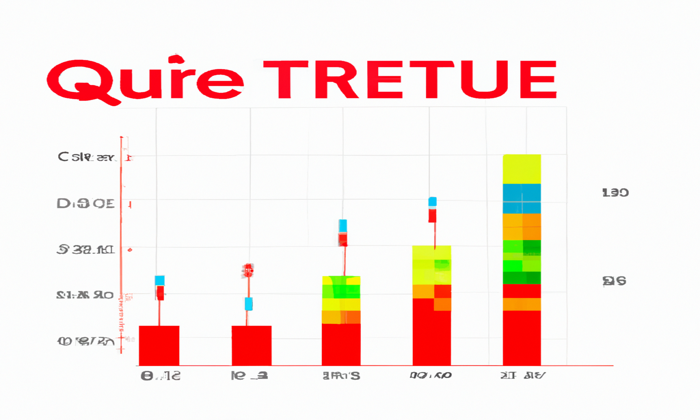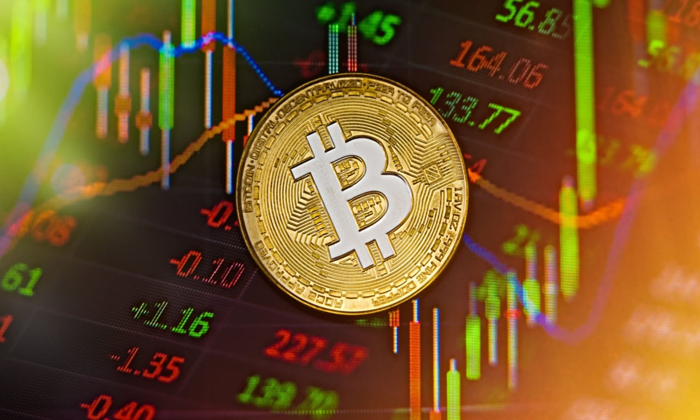The recent developments regarding SEC crypto regulation have been a focal point for investors and stakeholders within the digital asset ecosystem. With the U.S. Securities and Exchange Commission reassessing its stance on cryptocurrency and how these investments intersect with existing securities laws, the implications are profound. This review comes at a time when Circle’s initial public offering (IPO) hangs in the balance, compounded by the adverse effects of President Trump’s tariffs contributing to a downturn in the crypto market. Additionally, with the SEC providing stablecoin guidance, clarity on covered stablecoins could reshape investment strategies amidst plummeting crypto funding rates. As the regulatory landscape evolves, understanding these dynamics is crucial for navigating the fast-paced world of cryptocurrencies.
Recent actions by the Securities and Exchange Commission regarding digital currencies underscore the agency’s efforts to provide clearer guidelines for the crypto industry. As regulators revisit their policies on cryptocurrencies and identify which digital assets may be classified as securities, the future of businesses like Circle, which is on the brink of an IPO, remains uncertain. The steep decline in the cryptocurrency market, exacerbated by economic pressures such as tariffs imposed by former President Trump, has led to increased volatility and concern among traders. Meanwhile, the SEC’s announcement surrounding stablecoin oversight attempts to address the burgeoning stablecoin sector amid fluctuating funding rates in the crypto market. Navigating these regulations will be vital for anyone involved in the fast-evolving landscape of digital currencies.
SEC Crypto Regulation: An Overview of the Recent Developments
The U.S. Securities and Exchange Commission (SEC) has taken substantial steps toward revising its guidance on cryptocurrencies and related security laws. Under the leadership of Acting Chair Mark T. Uyeda, the SEC is set to re-evaluate its previous statements, particularly in light of Executive Order 14192 which targets deregulation. This could mean significant changes in how digital assets are classified under the Howey test, which might bring clarity to the often murky waters of crypto investment regulations. The implications of this review could pave the way for either more stringent measures or a more permissive environment for crypto businesses, which is timely given the volatile nature of the crypto market.
Additionally, potential shifts in regulation could influence investors’ confidence in cryptocurrency assets. The SEC is also expected to address its earlier guidance regarding Bitcoin futures investments in mutual funds, which warned against the speculative nature of these assets. With ongoing discussions surrounding the risks associated with crypto investments, the SEC’s renewed focus may provide a much-needed framework that could encourage institutional investment while helping protect retail investors amid the ongoing crypto market downturn.
Understanding Covered Stablecoins as per SEC Guidance
In its latest announcement, the SEC clarified its stance on what constitutes a ‘Covered Stablecoin.’ These stablecoins, primarily pegged to the U.S. dollar, are framed as tokens maintaining a 1:1 value ratio and designed for easy redemption in USD. The SEC’s guidance significantly narrows its jurisdiction over stablecoins, focusing on those that are adequately backed by low-risk assets, thus ensuring investor protection. This regulatory framework particularly targets tokens like Tether (USDT) and USD Coin (USDC), which are seen as stable investment options amid the current volatility in the crypto market.
Moreover, this delineation raises questions about the future of algorithmic and non-USD-backed stablecoins, which the SEC has excluded from its regulatory purview. The growing interest in stablecoins correlates with the need for stable and reliable transactions in an increasingly uncertain economic landscape fueled by President Trump’s tariffs. Investors must pay close attention to how these guidelines evolve, as they can significantly impact the functionality and acceptance of stablecoins in the broader financial ecosystem.
Circle’s IPO: The Future of Digital Finance
Circle has made headlines with its recent IPO filing, which signals a transformative moment for the intersection of traditional finance and the crypto sector. Planning to list its shares under the ticker ‘CRCL’ on the New York Stock Exchange, Circle aims to leverage its position in the market as the issuer of USD Coin (USDC). However, the delay in their IPO due to economic uncertainties raises questions about how external factors, such as President Trump’s tariffs, are influencing corporate decisions in the crypto space.
Experts speculate that Circle’s IPO might pave the way for increased institutional adoption of cryptocurrencies. The influx of institutional investment can further stabilize the market and potentially enhance crypto funding rates after a recent plunge. If successful, Circle’s IPO could showcase the viability of stablecoins and catalyze a stronger framework for cryptocurrency operations, making it easier for other crypto companies to follow suit.
Market Reactions to Tariff Announcements: Impact on Crypto
The recent announcements regarding President Trump’s tariffs have sent shockwaves through financial markets, impacting both equities and cryptocurrencies. The tariffs have compounded fears surrounding economic slowdowns, leading to a sell-off in small caps and a notable decline in the crypto market. Investors have reacted cautiously, causing the U.S. dollar to lose ground against other currencies, as fears of stagflation loom large over the market. The hybrid challenges of inflation and stagnant growth have created a perfect storm for traders, making the ongoing tariff situation a critical point of focus.
As analysts at Nansen indicate, traders are proactive in responding to these changes, leading to the emergence of bearish sentiment across trading platforms. The dramatic shifts in trading volumes and sentiment signal the necessity for investors to reassess their strategies. Moving forward, it’s vital for investors to consider external economic factors like tariffs, which contribute to the overall volatility in crypto funding rates, further complicating market dynamics.
The Decline in Crypto Funding Rates Amid Economic Uncertainty
The crypto market is experiencing substantial volatility, reflected by a sharp decline in crypto funding rates. Following the recent tariff announcements, funding rates across both centralized and decentralized exchanges have dipped below the 0.005% threshold. This drastic fall indicates extreme bearish sentiment as traders exercise caution and reevaluation of their positions. With liquidation rates also decreasing, many traders appear to be minimizing their exposure to potential losses while anticipating further market fluctuations.
Moreover, the overall trading volume has been notably impacted, with a 22.71% drop translating into $247.6 billion. This level of activity highlights the ongoing hesitance within the trading community and contrasts sharply with previous months’ trends. As traders adopt a more conservative approach, the implications for the future of crypto funding rates remain uncertain, necessitating close monitoring of policy changes and market trends.
CLS Global and Regulatory Challenges in the Crypto Space
The sentencing of CLS Global for manipulating trading volumes raises significant concerns about the integrity of the crypto market. As the FBI intervened with its operation ‘Operation Token Mirrors’, it demonstrates the need for more vigilant oversight and regulatory frameworks in an industry characterized by rapid innovation but also by risks of fraud and misconduct. This case serves as a wake-up call for investors, emphasizing the importance of due diligence and awareness of potential malpractices within the crypto ecosystem.
As regulators continue to tighten rules surrounding the cryptocurrency sector, compliance and ethical operations will become ever more critical. The actions taken against CLS Global reflect broader efforts to sanctify the crypto landscape, ensuring better investor protection and reducing instances of manipulation. Stakeholders should remain informed and prepared for forthcoming changes in regulation, as they can significantly shape the operational landscape for crypto entities and their investors in the foreseeable future.
Frequently Asked Questions
What is the SEC’s stance on crypto regulation after the Circle IPO announcement?
Following the announcement of Circle’s IPO, the SEC is reassessing its guidance on cryptocurrency regulation. This includes reviewing previous statements about how digital assets are classified under securities law, particularly in light of the Circle IPO’s potential impact on the crypto market.
How do President Trump’s tariffs affect the SEC’s crypto regulation?
The SEC’s approach to crypto regulation is presently influenced by the broader economic environment, including President Trump’s tariffs, which have contributed to a downturn in the crypto market. The SEC may need to balance its regulatory framework with these economic challenges to support market stability.
What are the new guidelines from the SEC regarding stablecoin regulation?
The SEC has introduced new guidance stating that ‘Covered Stablecoins’ are not classified under its jurisdiction, which includes only USD-pegged tokens like USDT and USDC. This new stance aims to clarify the regulatory landscape for stablecoins in the context of evolving crypto regulations.
How is the crypto market responding to changes in SEC regulations?
The crypto market is experiencing significant volatility as traders react to shifts in SEC regulations and the broader economic implications, including funding rate plunges and reduced trading volumes. This reflects a cautious sentiment as investors await clearer regulatory guidance.
What are the implications of the SEC’s review of crypto guidance for investors?
As the SEC revisits its guidance on digital assets, it may implement new regulations affecting how cryptocurrencies are traded and classified. Investors should stay informed about these changes, as they could significantly influence investment strategies and market dynamics.
How has the crypto funding rate changed in light of recent SEC announcements?
In response to recent SEC announcements and the overall market climate, crypto funding rates have plunged, dropping below the 0.005% mark. This indicates a shift towards extreme caution among traders, reflecting bearish sentiment tied to regulatory uncertainties and economic conditions.
What are the risks identified by the SEC in its new crypto guidance?
The SEC’s new guidance highlights potential risks associated with cryptocurrency investments, particularly in light of past market volatility and bankruptcies in the sector. Investors should be aware of these risks when considering digital asset investments and the implications of SEC regulations.
Why is the Circle IPO significant for the future of crypto regulation?
The Circle IPO is significant as it could mark a pivotal moment in crypto regulation, potentially influencing institutional adoption and shaping how the SEC approaches digital asset classifications and regulations moving forward.
| Key Point | Details |
|---|---|
| SEC to Revisit Guidance | The SEC is reviewing statements regarding cryptocurrency classifications and securities laws, focusing on the Howey test and previous guidances on crypto risk. |
| Covered Stablecoins | The SEC clarified that only certain stablecoins, like USDT and USDC, are under its jurisdiction, specifically excluding algorithmic and non-USD-pegged ones. |
| Circle’s IPO Uncertainty | Circle is planning an IPO under the ticker ‘CRCL’, but is reevaluating due to market conditions and economic uncertainties. |
| Tariff Impact on Markets | Trump’s tariff announcements have triggered a market downturn, impacting both equity and crypto sectors, leading to a bearish atmosphere. |
| Plummet in Crypto Funding Rates | Bearish sentiment has caused funding rates across exchanges to drop significantly, with trading volumes also declining sharply. |
| CLS Global Sanctions | CLS Global was sentenced for manipulating trading volumes related to a token in a sting operation orchestrated by the FBI. |
Summary
SEC Crypto Regulation is under intense scrutiny as the agency revisits its guidance on digital assets. With President Trump’s recent tariffs affecting market stability, the SEC’s plans to reevaluate crypto regulations and stablecoin jurisdiction could have significant implications for how cryptocurrencies operate. Major players like Circle are feeling the economic squeeze as they navigate uncertain IPO timelines amid declining market trust and regulatory clarity.
In the ever-evolving landscape of finance, SEC Crypto Regulation is taking center stage as the U.S. Securities and Exchange Commission revisits its approach to digital assets and securities laws. Recent developments surrounding Circle’s Initial Public Offering (IPO) highlight the uncertainties in the crypto market, compounded by the implications of President Trump’s tariffs which have contributed to a broader market downturn. The SEC’s emphasis on providing stablecoin guidance underscores its commitment to distinguishing between various types of cryptocurrencies and ensuring that regulations are effectively applied. As crypto funding rates experience significant fluctuations, stakeholders are left to navigate an increasingly turbulent environment. With a renewed focus on compliance and oversight, the future of digital currencies hangs in the balance as regulatory clarity may determine their trajectory in the economy.
Exploring the framework of digital asset regulation reveals the crucial role played by regulatory bodies in shaping the crypto landscape. Recent insights into the SEC’s efforts to refine its guidelines for cryptocurrencies signal a pivotal moment for the industry, especially amid uncertainties linked to economic policies and global trade tensions. Terms like ‘stablecoin criteria’ and ‘cryptocurrency governance’ have become intertwined with discussions around the viability of digital investments. Furthermore, the ramifications of international tariffs and fluctuating crypto market conditions are forcing businesses and investors alike to reconsider their strategies. As discussions about stablecoin compliance and enhanced investor protection continue, the conversation surrounding digital currency regulation is more relevant than ever.














